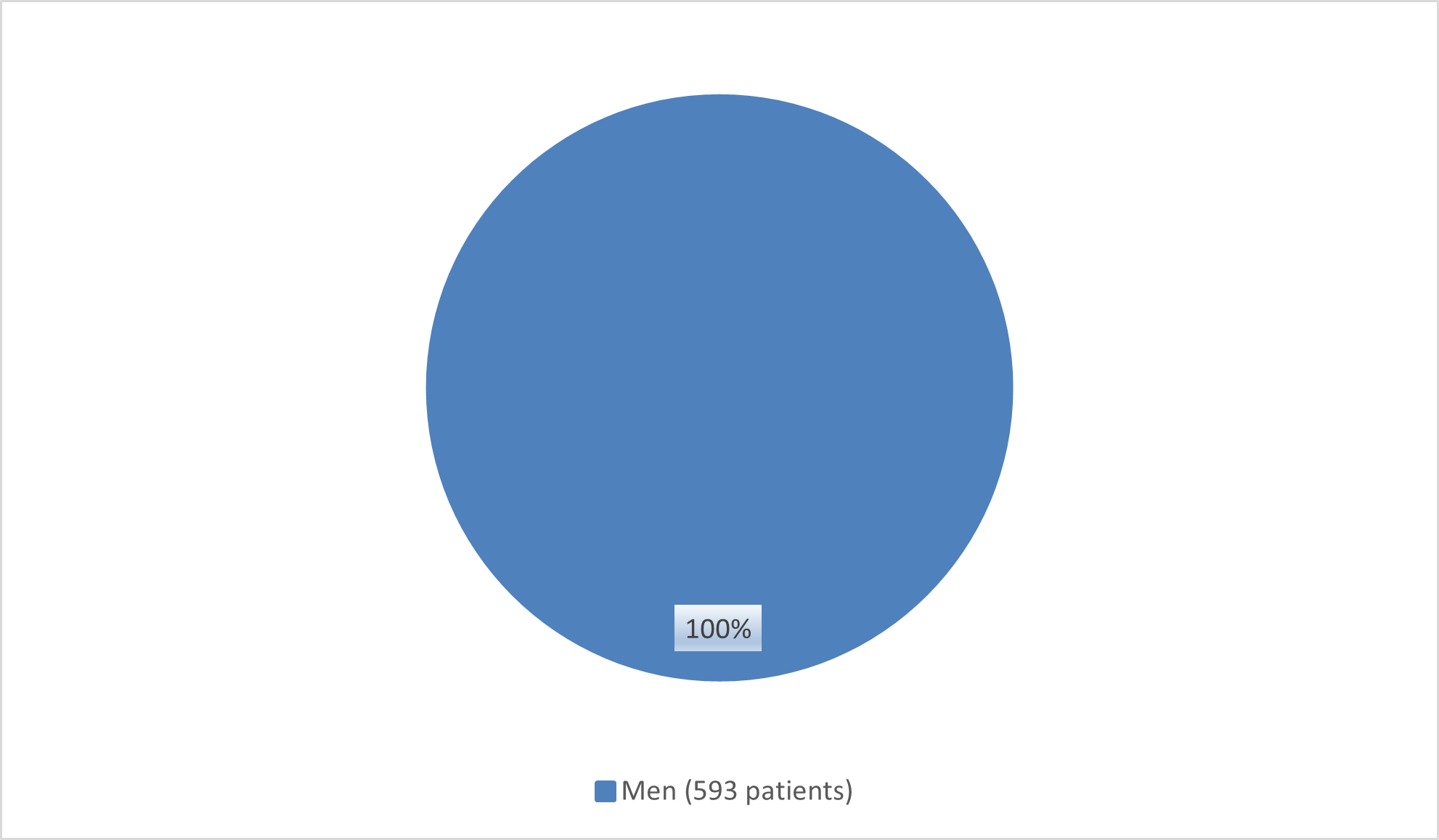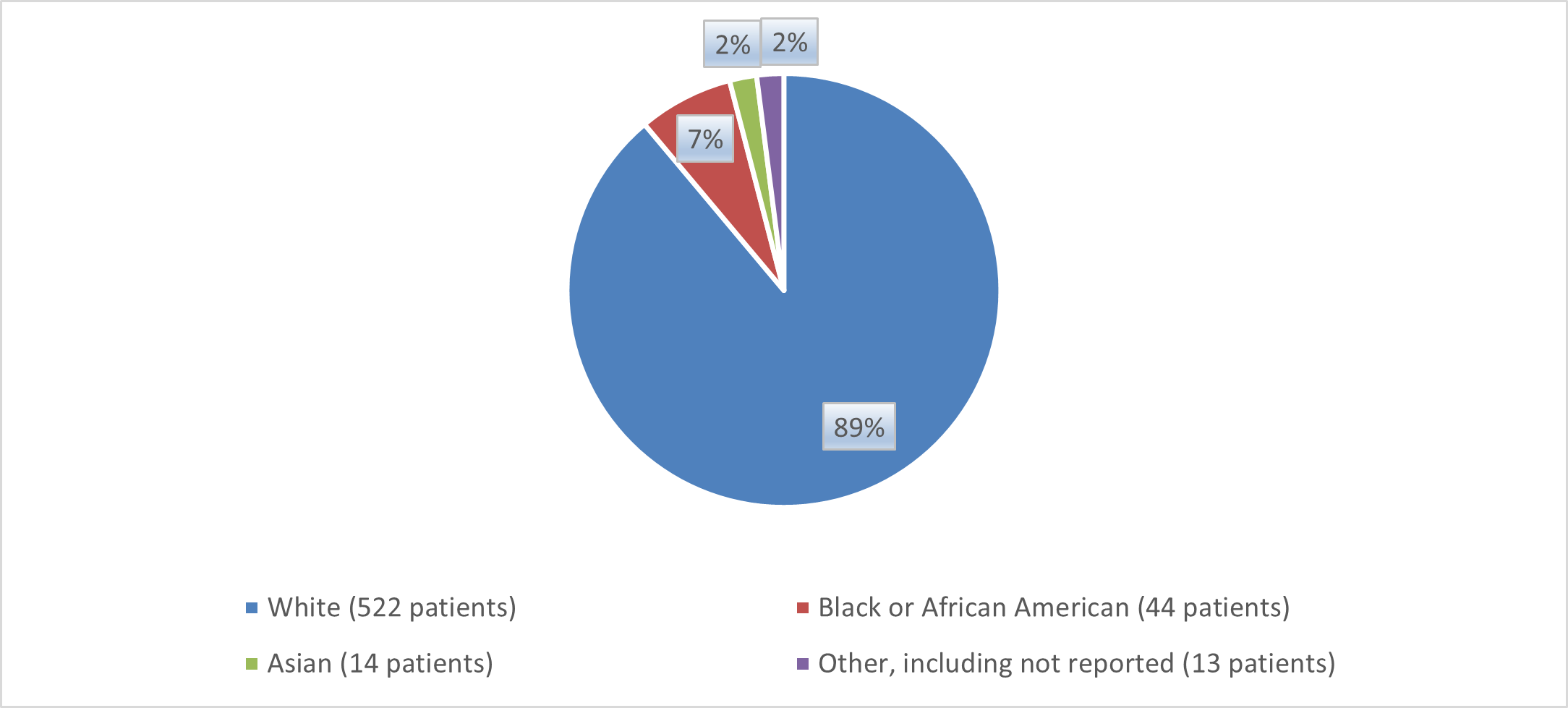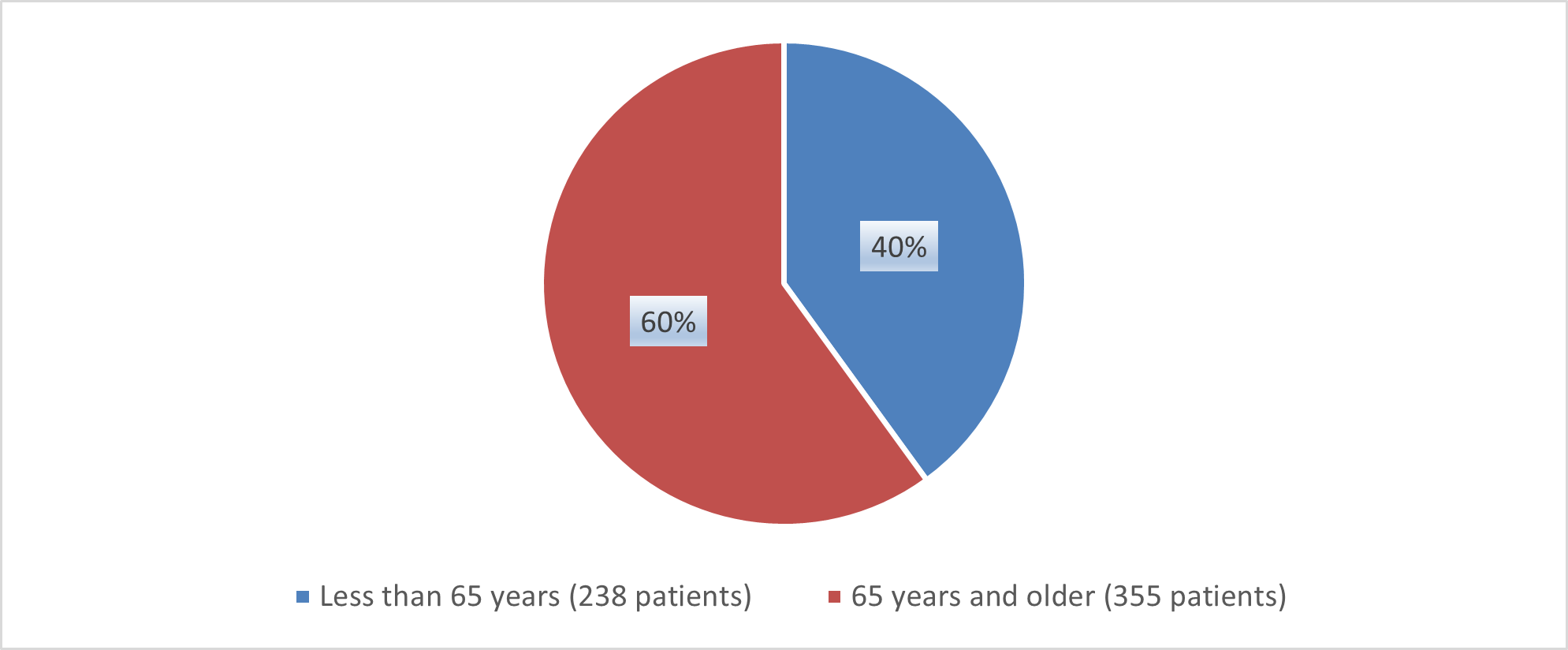Drug Trials Snapshots: PYLARIFY
HOW TO USE THIS SNAPSHOT
The information provided in Snapshots highlights who participated in the key clinical trials that supported the original FDA approval of this drug, and whether there were differences among sex, race, age, and ethnic groups. The “MORE INFO” bar shows more detailed, technical content for each section. The Snapshot is intended as one tool for consumers to use when discussing the risks and benefits of the drugs.
LIMITATIONS OF THIS SNAPSHOT
Do not rely on Snapshots to make decisions regarding medical care. Always speak to your healthcare provider about the benefits and risks of a drug.
Snapshots are limited to the information available at the time of the original approval of the drug and do not provide information on who participated in clinical trials that supported later approvals for additional uses of the drug (if applicable). Refer to the PYLARIFY Prescribing Information for all of the approved conditions of use of this drug (e.g., indication(s), population(s), dosing regimen(s), safety information).
PYLARIFY (piflufolastat F 18)
(Pil ar’ i fye)
Lantheus
Original Approval date: May 26, 2021
DRUG TRIALS SNAPSHOT SUMMARY:
What is the drug for?
PYLARIFY is a drug used for detection of specific cancer lesions in patients with prostate cancer
- whose newly diagnosed cancer could be cured with the initial treatment, or
- who have been treated for prostate cancer but have high prostate-specific antigen (PSA) in their blood. High PSA in the blood of these patients is a sign that cancer is coming back or spreading.
How is this drug used?
PYLARIFY is an injection given by a health care provider in the vein (intravenous) in preparation for an imaging test that can help detect cancer (called positron emission tomography or PET scan imaging).
Who participated in the clinical trials?
The FDA approved PYLARIFY based on evidence from two clinical trials (Trial 1/NCT02981368 and Trial 2/NCT03739684) of 593 male patients with prostate cancer. Trial 1 included two groups of patients, some with recently diagnosed prostate cancer and others with suspicious findings on standard tests. Trial 2 included patients who were treated for prostate cancer before, but there was suspicion that the cancer was spreading because of rising prostate-specific antigen (PSA). Patients in Trial 2 and the recently diagnosed patients in Trial 1 were studied for effectiveness of PYLARIFY, and all patients were studied for safety. Trial 1 was conducted at 8 sites in the USA and 2 sites in Canada, and Trial 2 was conducted at 13 sites in the USA and 1 site in Canada. The number of patients representing efficacy findings may differ from the number of patients representing safety findings due to different pools of study participants analyzed for efficacy and safety.
What are the benefits of this drug?
PET imaging done after PYLARIFY injection showed sites of prostate-specific membrane antigen (PSMA) positive lesions in patients with prostate cancer. PSMA is often present in prostate cancers.
What are the benefits of this drug drug (results of trials used to assess efficacy)?
Table 1 below summarizes efficacy results for Trial 1 based on comparison of each of three readers’ PET interpretations to pelvic lymph node histopathology at the patient-level with region matching, such that at least one true positive lesion defined a true positive patient.
Table 1. Patient-Level, Region-Matched Performance of PYLARIFY PET for Detection of Pelvic Lymph Node Metastasis in Trial 1 (n=252)
| Reader 1 | Reader 2 | Reader 3 | |
|---|---|---|---|
| True Positive | 23 | 17 | 23 |
| False Positive | 7 | 4 | 9 |
| False Negative | 36 | 43 | 37 |
| True Negative | 186 | 188 | 183 |
| Sensitivity, % (95% CI) | 39 (27, 51) | 28 (17, 40) | 38 (26, 51) |
| Specificity, % (95% CI) | 96 (94, 99) | 98 (95, 99) | 95 (92, 98) |
| PPV, % (95% CI) | 77 (62, 92) | 81 (59, 93) | 72 (56, 87) |
| NPV, % (95% CI) | 84 (79, 89) | 81 (76, 86) | 83 (78, 88) |
CI = confidence interval, PPV = positive predictive value, NPV = negative predictive value
Source: PYLARIFY Prescribing Information
Table 2 summarizes efficacy results for Trial 2 by PET reader. Correct Localization Rate (CLR) represents the location-matched positive predictive value, or the percentage of patients who had at least one matching location positive on both PYLARIFY PET and a composite reference standard (i.e., true positive patients) out of all patients who had a PET positive scan and available composite reference standard information for comparison (i.e., the Evaluable Set). The Imputed CLR results were generated through an exploratory analysis in which PYLARIFY PET positive patients who lacked reference standard information were imputed using an estimated likelihood that at least one PET-positive lesion was reference standard positive. These results were combined with the original CLR results to obtain the Imputed CLR results, expressed as the percentage of true positive patients out of all patients who had a PET positive scan, regardless of availability of composite reference standard information.
Table 2. Patient-Level Performance of PYLARIFY PET in Trial 2 (n=208)
| Reader 1 | Reader 2 | Reader 3 | |
|---|---|---|---|
| True Positive (TP) | 89 | 87 | 84 |
| False Positive (FP) | 15 | 13 | 15 |
| PET-Positive Without Reference Standard | 33 | 24 | 24 |
| PET-Negative | 71 | 84 | 85 |
| CLR % (95% CI) | 86 (79, 92) | 87 (80, 94) | 85 (78, 92) |
| Imputed CLR % (95% CI) | 78 (71, 85) | 81 (74, 88) | 79 (72, 86) |
Source: PYLARIFY Prescribing Information
TP = true positive, FP = false positive, CLR = Correct Localization Rate, location-matched positive predictive value in the Evaluable Set [TP/(TP + FP)], Imputed CLR = location-matched positive predictive value in all scanned patients using an imputation approach based on patient-specific factors for PET-Positive Without Reference Standard, CI = confidence interval
Were there any differences in how well the drug worked in clinical trials among sex, race and age?
- Sex: All trial participants were male. Sex differences cannot be determined.
- Race: The number of patients of races other than White was small; therefore, differences in how PYLARIFY worked among races could not be determined.
- Age: PYLARIFY worked similarly in patients younger and older than 65 years of age.
Were there any differences in how well the drug worked in clinical trials among sex, race, and age groups?
The tables below summarize efficacy results by age. CI = confidence interval, n = number of patients, PPV = positive predictive value, NPV = negative predictive value Source: FDA Review
| Diagnostic Performance Measure | Reader 1 | Reader 2 | Reader 3 | |||
|---|---|---|---|---|---|---|
| Age ≤ 64 (n=126) | Age ≥ 65 (n=126) | Age ≤ 64 (n=126) | Age ≥ 65 (n=126) | Age ≤ 64 (n=126) | Age ≥ 65 (n=126) | |
| True positive | 13 | 10 | 10 | 7 | 13 | 10 |
| False positive | 2 | 5 | 2 | 2 | 4 | 5 |
| False negative | 20 | 16 | 23 | 20 | 21 | 16 |
| True negative | 91 | 95 | 91 | 97 | 88 | 95 |
| Sensitivity, point estimate (95% CI) | 0.39 (0.23, 0.56) |
0.38 (0.20, 0.57) |
0.30 (0.15, 0.46) |
0.26 (0.09, 0.42) |
0.38 (0.22, 0.55) |
0.38 (0.20, 0.57) |
| Specificity, point estimate (95% CI) | 0.98 (0.92, 1) |
0.95 (0.91, 0.99) |
0.98 (0.92, 1) |
0.98 (0.92, 1) |
0.96 (0.89, 0.99) |
0.95 (0.91, 0.99) |
| PPV, point estimate (95% CI) | 0.87 (0.61, 0.98) |
0.67 (0.43, 0.91) |
0.83 (0.54, 0.97) |
0.78 (0.44, 0.95) |
0.76 (0.52, 0.91) |
0.67 (0.43, 0.91) |
| NPV, point estimate (95% CI) | 0.82 (0.75, 0.89) |
0.86 (0.79, 0.92) |
0.80 (0.72, 0.87) |
0.83 (0.76, 0.90) |
0.81 (0.73, 0.88) |
0.86 (0.79, 0.92) |
| % pathology positive, point estimate (95% CI) | 0.26 (0.19, 0.34) |
0.21 (0.14, 0.28) |
0.26 (0.19, 0.34) |
0.21 (0.14, 0.29) |
0.27 (0.19, 0.35) |
0.21 (0.14, 0.28) |
CI = confidence interval, n = number of patients, PPV = positive predictive value, NPV = negative predictive value
Source: FDA Review
Table 4. Efficacy Subgroup Analysis by Reader by Age in Trial 2.
| Diagnostic Performance Measure | Reader 1 | Reader 2 | Reader 3 | |||
|---|---|---|---|---|---|---|
| Age ≤ 64 (n=67) | Age ≥ 65 (n=141) | Age ≤ 64 (n=67) | Age ≥ 65 (n=141) | Age ≤ 64 (n=67) | Age ≥ 65 (n=141) | |
| True positive | 21 | 68 | 21 | 66 | 19 | 65 |
| False positive | 4 | 11 | 4 | 9 | 5 | 10 |
| PET positive without reference standard | 13 | 20 | 9 | 15 | 10 | 14 |
| PET negative | 29 | 42 | 33 | 51 | 33 | 52 |
| Fraction PET positive | 0.57 | 0.70 | 0.51 | 0.64 | 0.51 | 0.63 |
| CDR, point estimate (95% CI) | 0.31 (0.20, 0.42) |
0.48 (0.40, 0.56) |
0.31 (0.20, 0.42) |
0.47 (0.39, 0.55) |
0.28 (0.18, 0.39) |
0.46 (0.38, 0.54) |
| PPV, point estimate (95% CI) | 0.84 (0.65, 0.94) |
0.85 (0.78, 0.94) |
0.84 (0.65, 0.94) |
0.88 (0.81, 0.95) |
0.79 (0.63, 0.95) |
0.87 (0.79, 0.94) |
CI = confidence interval, n = number of patients, CDR = correct detection rate, PET = positron emission tomography, PPV = positive predictive value
Source: FDA Review
What are the possible side effects?
PYLARIFY is a radioactive drug, which will increase lifetime radiation exposure. The safety of PYLARIFY was evaluated in 593 patients pooled from the two trials, each receiving a single dose of PYLARIFY. The most commonly reported adverse reactions were headache, dysgeusia, and fatigue, occurring at rates of 2%, 2%, and 1% respectively. In addition, a hypersensitivity reaction was reported in one patient (0.2%) with a history of allergic reaction
The most common side effects of PYLARIFY are headache, a metallic taste in the mouth, and feeling tired. The safety of PYLARIFY was evaluated in 593 patients pooled from the two trials, each receiving a single dose of PYLARIFY.
Were there any differences in side effects among sex, race and age?
- Sex: All trial participants were males. Sex differences in side effects could not be determined.
- Race: The number of patients of races other than White was small; therefore, differences in the occurrences of side effects among races could not be determined.
- Age: The occurrence of side effects was similar in patients younger and older than 65 years of age.
Were there any differences in side effects of the clinical trials among sex, race, and age groups?
The analysis of side effects among age groups is presented below.
Table 5. Adverse Events Stratified by Patient Age
| Reported Events | Age < 65 (n=238) |
Age ≥ 65 (n=355) |
|---|---|---|
| Patients with any adverse event (%) | 31 (13%) | 34 (10%) |
Source: FDA Review
n = number of patients
Demographics Snapshot
Figure 1 summarizes how many men and women were enrolled in the clinical trials used to evaluate the safety of PYLARIFY
Figure 1. Demographics by Sex (Safety Population)
Source: FDA Review
Figure 2 summarizes the percentage of patients by race in the clinical trials used to evaluate the safety of PYLARIFY
Figure 2. Demographics by Race (Safety Population)
Source: FDA Review
Figure 3 summarizes the percentage of patients by age group in the clinical trials used to evaluate the safety of PYLARIFY
Figure 3. Demographics by Age (Safety Population)
Source: FDA Review
Figure 4 summarizes the percentage of patients by ethnicity in the clinical trials used to evaluate the safety of PYLARIFY
Figure 4 Demographics by Ethnicity (Safety Population)
Source: FDA Review
Who participated in the trials?
The table below summarizes demographics of patients in both trials (safety population).
Table 6. Demographics of Patients in the Clinical Trials (Safety Population)
| Parameters | Pooled Safety Set (n=593) n (%) |
Trial 1 (n=385) n (%) |
Trial 2 (n=208) n (%) |
|---|---|---|---|
| Age | |||
| Mean years (SD) | 66.2 (7.6) | 65.2 (7.3) | 67.9 (7.8) |
| Median (years) | 66.0 | 66.0 | 68.0 |
| Min, max (years) | 43, 91 | 45, 86 | 43, 91 |
| Age Group | |||
| < 65 years | 238 (40%) | 171 (44%) | 67 (32%) |
| ≥ 65 years | 355 (60%) | 214 (56%) | 141 (68%) |
| Race | |||
| White | 522 (88%) | 334 (87%) | 188 (90%) |
| Black or African American | 44 (7%) | 29 (8%) | 15 (7%) |
| Asian | 14 (2%) | 11 (3%) | 3 (1%) |
| Other, including not reported | 13 (2%) | 11 (3%) | 2 (1%) |
| Ethnicity | |||
| Hispanic or Latino | 21 (4%) | 16 (4%) | 5 (2%) |
| Not Hispanic or Latino | 557 (94%) | 361 (94%) | 196 (94%) |
| Missing | 15 (2%) | 8 (2%) | 7 (3%) |
SD = standard deviation
Source: FDA Review
How were the trials designed?
There were two trials that evaluated benefits and side effects of PYLARIFY.
Trial 1 enrolled two groups of patients. One group was recently diagnosed with prostate cancer and were awaiting surgery for the removal of the prostate and the nearby lymph nodes. These patients were studied for benefit and side effects. The other group of patients had something suspicious for prostate cancer found on standard tests, and they were studied for side effects. Trial 2 enrolled patients who were already treated for prostate cancer but had rising PSA levels, suspicious for cancer spreading.
The benefit of PYLARIFY in Trial 1 was evaluated by measuring the successful detection of cancer lesions using PYLARIFY PET/CT imaging in comparison to post-surgery lymph tissue results (histopathology of the lymph nodes).
The benefit of PYLARIFY in Trial 2 was evaluated by comparing the agreement in cancer lesion detection between images done with PYLARIFY and one of the standard tests for detecting cancer spreading.
How were the trials designed?
The safety and efficacy of PYLARIFY were evaluated in two prospective, open-label trials (Trial 1 [Cohort A and Cohort B] and Trial 2) in men with prostate cancer.
Trial 1 Cohort A enrolled patients with at least high-risk prostate adenocarcinoma who were candidates for prostatectomy. Patients underwent PYLARIFY imaging followed by radical prostatectomy and pelvic lymph node dissection. The images were read by three blinded independent readers and compared to histopathology obtained from dissected pelvic lymph nodes.
Trial 1 Cohort B enrolled patients with recurrent or metastatic prostate cancer and a finding amenable to biopsy on conventional imaging.
Trial 2 enrolled patients with biochemically recurrent prostate cancer, defined by serum PSA of > 0.2 ng/mL more than 6 weeks after prostatectomy or by an increase in serum PSA of at least 2 ng/mL above nadir after definitive radiotherapy, and negative or equivocal conventional imaging. Each patient received a single PYLARIFY PET/CT. The images were read by three blinded independent readers and compared to at least one of the following: histopathology, correlative imaging, or PSA response to localized (radiation) therapy.
GLOSSARY
CLINICAL TRIAL: Voluntary research studies conducted in people and designed to answer specific questions about the safety or effectiveness of drugs, vaccines, other therapies, or new ways of using existing treatments.
COMPARATOR: A previously available treatment or placebo used in clinical trials that is compared to the actual drug being tested.
EFFICACY: How well the drug achieves the desired response when it is taken as described in a controlled clinical setting, such as during a clinical trial.
PLACEBO: An inactive substance or “sugar pill” that looks the same as, and is given the same way as, an active drug or treatment being tested. The effects of the active drug or treatment are compared to the effects of the placebo.
SUBGROUP: A subset of the population studied in a clinical trial. Demographic subsets include sex, race, and age groups.




